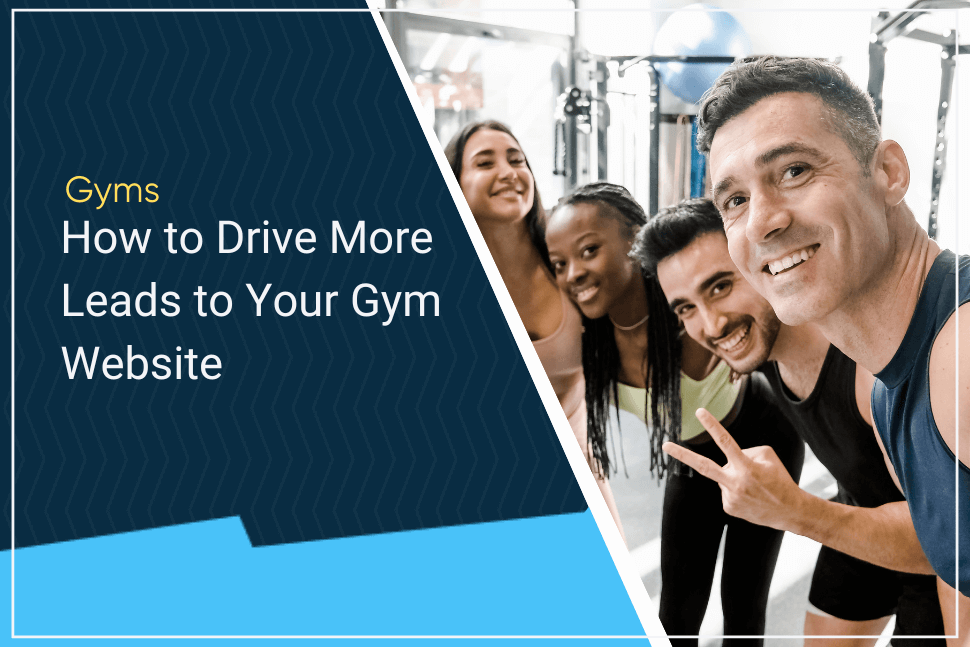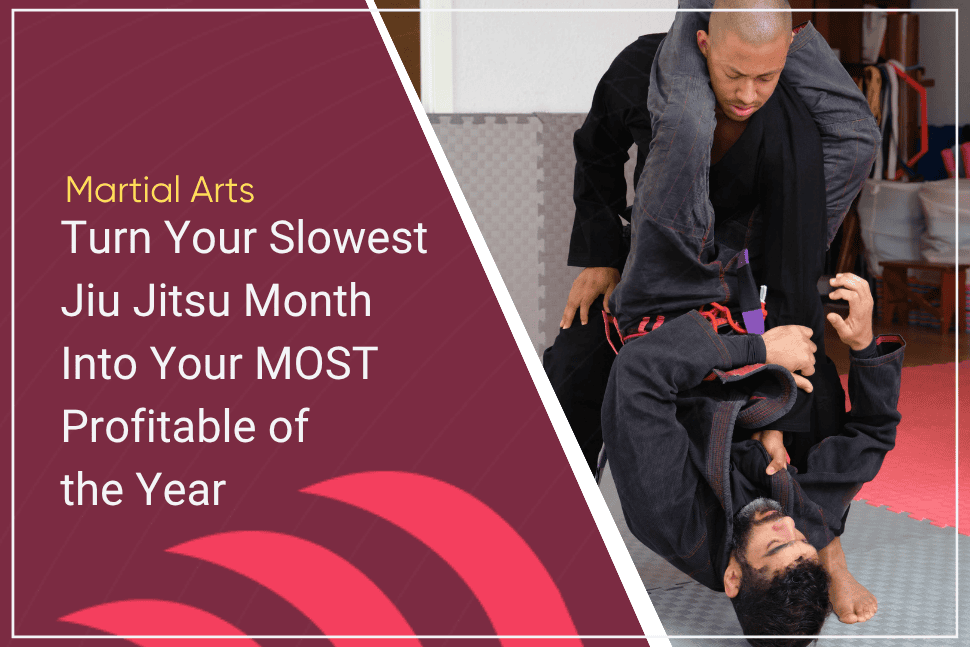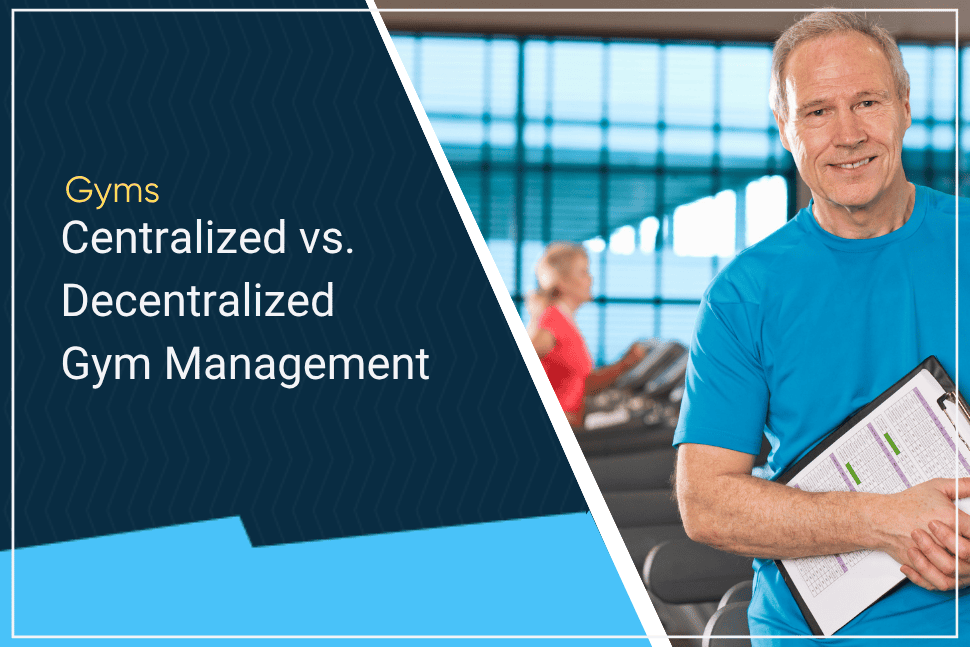You refresh the analytics report for the 11th time in the last ten minutes. Nothing.
You go out for a 5 minute walk and come back. Click.
Lead Count: 0
You’d bang your head against the computer if you could. Your website has been up for months, but it hasn’t driven you new leads the way it was promised.
Your gym website is the anchor of your online presence. It’s your virtual storefront and potential members’ first point of contact. Yet it’s also only a powerful vehicle for lead generation–converting visitors into paying clients–if you do it right.
But it doesn’t happen automatically. Throwing up a website is not enough.
Try these tips and strategies instead.
Craft Compelling Content
While website design elements like ultra-fast loading times, dark mode, and 3-D elements all contribute to a compelling website, content is, has been, and always will be king. That is what engages, informs, and, ultimately, converts visitors into leads.
Great content, enriched with target keywords, will improve your search engine ranking. As well as written content, consider including video. Video content is a dynamic and engaging way to showcase your gym’s facilities, classes, and atmosphere.
Virtual tours, workout demonstrations, and success stories in video format provide a richer experience for visitors.
Podcasts are another great content addition. They offer an audio alternative for delivering valuable fitness insights, expert interviews, and motivational content.
You should also invest in high-resolution, professional-quality images that showcase your gym’s environment, equipment, and community. Visually appealing graphics and animations can convey information in a visually stimulating way.
Infographics, animated workout routines, and interactive content enhance engagement and make complex information more digestible.
It’s essential to carefully consider where you will place content elements on your website. Strategically embedding videos on the homepage or incorporating eye-catching graphics guides visitors toward key conversion points.
Regularly updating content ensures that your website remains relevant and reflects the latest offerings, promotions, and community events.
Once your website is up and running, it’s essential to unlock its full potential by driving traffic and ensuring visibility on search engines. While social media platforms play a role, search engines like Google remain pivotal in attracting targeted visitors actively seeking your offerings. Here are five essential tips to ensure your website operates at its peak efficiency:
1. Page Title Tags:
- The title tag is a critical on-page SEO element, appearing in browsers, search engine results, and external websites.
- Google typically displays the first 50 to 60 characters, so keeping titles under 60 ensures optimal visibility.
- Title tags should contain relevant keywords, align with page content, and be unique for each page.
2. Meta Descriptions:
- These short page descriptions are crucial as they influence users’ decisions to click on search results.
- Craft compelling descriptions within the 156-character limit, focusing on key keywords to entice users to visit your site.
3. Content Quality:
- Create compelling, engaging, and relevant content that enhances the user experience.
- Google now values content quality over specific keywords, emphasizing the importance of providing value to users.
- Basic rules for content creation include a minimum of 300 words per page, focusing on benefits over features and avoiding duplicated content.
4. Headlines (H1 Tags):
- Headlines, designated as H1 tags, significantly impact search rankings.
- Including relevant keyword search terms in headlines improves visibility in search results.
5. Link Building:
- Establishing links pointing to your site from other reputable sites enhances your website’s perceived importance by search engines.
- Aim for external publications featuring links to your content and implement internal linking within your website and blog.
Your Gym Blog
Adding a blog to your gym website content marketing efforts will massively increase the value you offer to visitors, providing more opportunities to engage potential members. A blog lets you showcase your gym’s fitness, health, and wellness expertise.
By consistently publishing well-researched and informative articles, you position your gym as an authority in the industry, building trust with your audience.
A regularly updated blog will also boost your search engine optimization. Search engines prioritize fresh, relevant content, and a blog ensures your website remains dynamic, increasing its visibility in search engine results.
Your blog also provides a forum for community engagement. Encourage comments, questions, and discussions on your posts. These help create a sense of community and connection among your audience.
You can also showcase member success stories on your blog. Sharing real-life transformations and achievements is robust marketing material, inspiring potential members to join your community.
Optimize Website Design
Most people searching for a gym will make Google their first port of call. You will struggle to be noticed if your website isn’t on the first search page. But getting people to click on your site is just the beginning.
A poorly designed website undermines its core function of marketing your gym to potential members. If your website is confusing to navigate, lacks essential information, or simply looks dull, you will have created a negative first impression that can be impossible to overcome.
A well-designed website will help with your Google page ranking. It also generates high-quality leads that your sales team can follow up on.
The first step in creating an awesome website is deciding how to build it. Will you build it yourself through a platform like WordPress and a DIY website builder such as Weebly, or will you pay a professional web designer to do the job for you? In my experience, paying a couple of thousand dollars for a professionally built website is well worth the investment.

Let’s now break down the essential elements of your gym website:
- Home Page: Clearly describes how your gym helps people and why visitors should explore further. Include a prominent call-to-action button, such as ‘book a tour’ or ‘sign up online.’
- About Page: A practical About Page balances professionalism and personality while explaining how your gym helps people, your values, and what sets you apart from competitors.
- Products or Services: Outlines your gym’s offerings, including membership options, personal training services, group classes, etc. Focus on the benefits and the things that differentiate your gym from the competition. Include clear pricing information. Include proof of your gym’s value through testimonials, reviews, or return on investment statistics.
- Contact Page: Provide clear instructions on how people can contact you, whether through an online booking form, phone, or email.
- Responsiveness: Your gym website must be fully responsive, providing a seamless experience on mobile, tablet, and desktop devices.
Implement Effective SEO Strategies
No one will see your website unless you effectively utilize Search Engine Optimization (SEO) strategies. Google and other search engines prioritize user-friendly, engaging, and regularly updated sites. Sites that are mobile-friendly also receive preferential search engine treatment.
You should undertake thorough keyword research to identify high-ranking words and phrases relevant to your gym. Strategically integrate these keywords into your headers, meta titles, meta descriptions, and body copy.
Use long-tail keywords that reflect the specific services, classes, or amenities your gym provides.
Regularly update your website blog with high-quality, informative fitness, health, and wellness content.
Local SEO is essential for community engagement. Make sure that you optimize your Google My Business profile so that it is visible to local users. You can also enhance local credibility by encouraging local reviews and responding promptly to inquiries.
Technical SEO considerations like website speed, crawlability, and structured data are vital in SEO optimization. From a technical standpoint, a well-optimized website improves search engine indexing and overall site performance.
Optimize your website’s page load speed, as slow-loading pages can negatively impact SEO. Compress images, leverage browser caching, and minimize unnecessary code. Use tools like Google PageSpeed Insights to identify areas for improvement and implement changes accordingly.
Test your site’s mobile responsiveness and make necessary adjustments to improve load times and usability.
SEO is an ongoing process that requires continuous monitoring and adaptation. Have a schedule to regularly analyze website performance and track keyword rankings to adjust strategies based on evolving search engine algorithms.
Provide a Compelling Lead Magnet
A lead magnet is a product or service you offer free of charge in exchange for the interested person’s email address. There are three criteria for an effective gym lead magnet:
- Partial Problem Solving
A lead magnet should address a specific problem for the target audience but refrain from resolving the entire issue. Complete resolution might negate the need for your gym’s services. For instance, offering a comprehensive home workout ebook could empower individuals to forgo joining your gym. The lead magnet should provide a starting point for problem-solving, guiding them toward your gym to complete the process.
- Uniqueness
Your lead magnet must stand out in a way that prevents easy replication through a simple Google search. The content should be more comprehensive, targeted, and distinct than average YouTube clips or fitness website articles.
- Establishing Expertise
Every aspect of the lead magnet, from the design and layout of the landing page to the actual content, should convey that you are an authority in addressing the specific problem, whether it’s muscle building, overcoming plateaus, or losing body fat.
Maximize Gym Landing Pages
Your gym’s landing pages are the primary tool to convert visitors into leads. A well-designed landing page allows you to tailor your content and messages to specific offers and services. Create specific landing pages for lead magnets, promotions, classes, or special events.
Landing pages allow visitors to quickly find the details they are looking for without navigating through various sections of your website, reducing the chances of confusion or frustration.
Here are some tips on how to use landing pages effectively:
- Develop Specific Landing Pages: Create dedicated landing pages for each specific purpose, such as promotions, events, or class sign-ups. Ensure that the content aligns precisely with the ad’s or promotional material messaging that led the visitor to the page.
- Compelling Headlines and Copy: Craft attention-grabbing headlines and concise, compelling copy. Communicate the value proposition and benefits to entice visitors to take the desired action.
- Engaging Visuals: Incorporate high-quality visuals that resonate with the promotion or offer, including images and videos.
- User-Friendly Forms: If the goal is to capture leads through a form, keep it simple and user-friendly. Request only essential information and make the submission process quick and hassle-free.
- Mobile Optimization: Ensure that your landing pages are optimized for mobile devices.
- A/B Testing: Experiment with A/B testing to refine and optimize your landing pages. Test different headlines, visuals, or CTAs to identify the elements that resonate most effectively with your audience.
- Integrate Analytics: Make use of analytical tools to track the performance of your landing pages. Monitor key metrics to understand how visitors interact with the page and identify areas for improvement.
Optimize the Use of Forms
Forms allow you to capture key information about website visitors to turn them into leads. You should strategically place them on your most high-traffic pages, such as your social media linked pages or blog.
You can also use them to gather information about a person before scheduling a consultation. Include questions that help you understand their fitness goals, preferences, and expectations.
Offer premium content or lead magnets behind a form to incentivize contact information submission. For example, if you have an informative article on weight loss, create a downloadable weight loss checklist or tracker. Users can access this resource by providing their contact details.
Best Practices for Form Optimization:
- Communicate the value proposition of submitting the form.
- Keep the number of form fields minimal to reduce friction.
- Ensure that forms are optimized for mobile devices.
- Experiment with different form designs, placements, and copy.
- Regularly analyze form performance through A/B testing to identify the most effective strategies.
Add a Live Chat Feature
Integrating live chat on your website provides an immediate forum for visitors to get answers. This will help you to generate leads that would otherwise be lost due to lack of information. It also offers a human connection, which has been shown to increase the likelihood of a visitor becoming a lead.
Live chat allows you to qualify a lead quickly to tailor your response to meet their needs more precisely. It also sends the message that your gym is accessible and responsive.
Facebook Messenger is a popular messaging app that can easily be integrated into your website. Position live chat widgets on critical pages, such as the homepage, membership information page, or contact page.
Ensure your team members handling live chat are trained to provide accurate and helpful information. Consistent and knowledgeable responses contribute to a positive user experience. You can use automated responses for frequently asked questions, which should be balanced with the human touch.
Build a Strong Social Media Presence
You know how vital a robust social media presence is for your gym. Unless you link your socials to your website, you’ll miss out on many leads. Linking to your site guides interested visitors to a place where they can learn more and potentially become members.
Encourage your social media followers to visit your website by including clear CTAs. Whether it’s promoting a special offer, inviting them to check out your blog, or signing up for a trial, guide them toward your website.
Ensure that your social media profiles contain direct links to your website. This makes it easy for interested people to transition from social media to your site for more information. You should also include calls to your site in your paid social media advertising.
Email Marketing for Lead Nurturing
The strategies already discussed will help you to collect leads in the form of email addresses. But it will be all for nothing unless you know how to nurture those leads effectively.
Embarking on a drip email campaign is a savvy move to convert leads into committed gym members. This proven format unfolds in a series of carefully crafted emails, each serving a distinct purpose.
Here is a proven five-email sequence:
Email #1: Introducing Yourself
The first email’s subject line is crucial for garnering attention. A subject like “Re: Your Free Fat Loss Guide” is effective if obtained through a lead magnet. Once opened, focus on building trust, establishing a connection, and highlighting the value subscribers gain from being on your list.
Email #2: Tell a Story
Share a compelling story about a member, showcasing how your service positively impacted their life. Align with your brand persona, emphasizing pain points your readers likely experience. Include before-and-after visuals and testimonials, obtaining permission and cooperation from the client.
Conclude with a teaser for the following email, promising insights into how you aided the client in achieving their goals.
Email #3: Provide Value
Build on the previous email, reminding readers of the client’s problem and presenting, in step form, how your service resolved it. Offer a brief sentence for each step and encourage readers to explore how your service could similarly benefit them.
Email #4: Facts
Having established an emotional connection, you should now transition to facts. Present statistics and figures related to the problem your readers face, reinforcing the impact of your service. Include testimonials showcasing how your gym has helped reduce risks associated with health conditions.
Email #5: Scarcity
With heightened interest, introduce urgency. Provide a time-sensitive offer—a discount, free trial, or upgraded service—to prompt immediate action.
To retain leads and minimize unsubscribes, make emails engaging and captivating. Beyond text, incorporate videos featuring coaches offering practical advice on diet and exercise, showcasing the gym’s energetic vibe. Deliver specific, valuable information not easily found online with each email to educate recipients.
Timing is crucial in email marketing. Send emails bi-weekly, maintaining a balance between staying top-of-mind and avoiding overkill. Keep emails concise, ending with a cliffhanger to instill anticipation for the following message.
Analyze Analytics and Adjust Strategy
Analyzing website analytics will help you drive more leads through your website. It will allow you to make informed decisions based on data-driven insights to enhance the user experience.
Before looking at analytics, you must clearly define your lead generation objectives. Generate key performance indicators (KPIs). These may include conversion rates, click-through rates, and lead acquisition costs.
Use Google Analytics to gain in-depth insights into user behavior, traffic sources, and page performance. Pay close attention to such metrics as bounce rates, session duration, and user demographics to understand how visitors interact with your site.
Set up conversion funnels within analytics tools to track the user journey from landing on the site to completing desired actions. Identify potential drop-off points in the conversion process and address any bottlenecks hindering lead generation.
Evaluate user engagement metrics, such as page views, time on site, and interaction rates.
Understand website traffic sources, distinguishing between organic, paid, and referral sources. Allocate resources based on the effectiveness of each channel in generating high-quality leads.
Use analytics to segment your audience based on demographics, behavior, or location. Tailor marketing strategies to specific audience segments, delivering personalized content and offers.
If your gym has a social media presence, you should also track social media analytics to gauge social media’s impact on website traffic. Identify which platforms drive the most engaged users and adjust social media strategies accordingly.
Conclusion
Your website has the potential to generate a constant flow of leads, providing your sales force with an ongoing supply of potential members.
Optimize your website with SEO-friendly content and engaging content that features videos, virtual tours, and podcasts.
Include at least one landing page with a compelling, unique offer and a solid call to action.
Optimize the use of forms, and be sure to link your social media to your website.
Then, having done the groundwork to bring in a constant stream of leads, ensure your automated email sequence nurtures the interest to seamlessly create new members.
 Gym Owner Statistics: The State of Gyms, Member Trends, and Usage Data
Gym Owner Statistics: The State of Gyms, Member Trends, and Usage Data




 EN (English)
EN (English)
 JA (日本語)
JA (日本語)